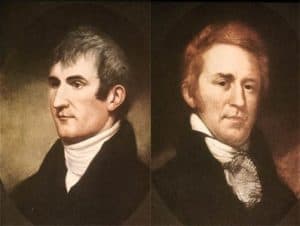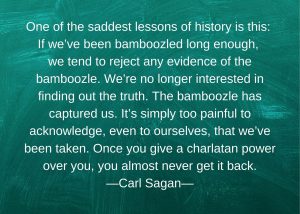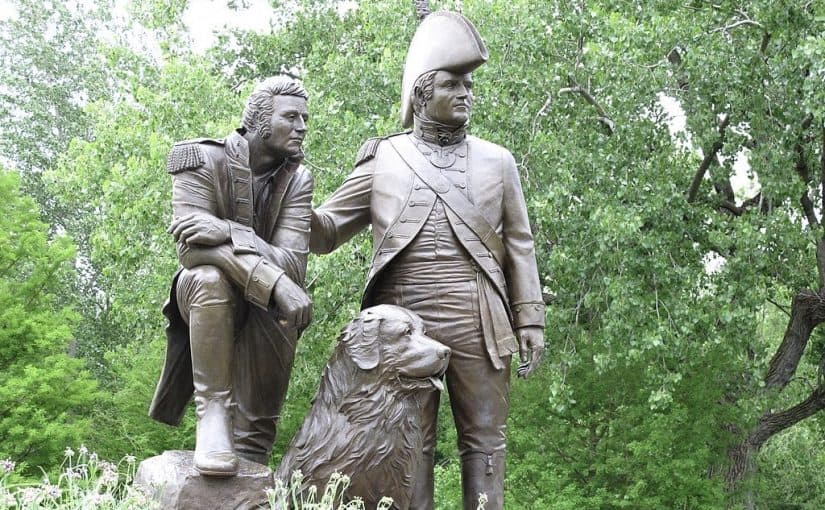
On Monday, May 14, 1804, a group of more than thirty volunteers who became known as the Corps of Discovery departed in three boats from Camp Dubois in Indiana Territory for St. Charles, Missouri. There they would join Captain Meriwether Lewis, the leader of the expedition of which they had agreed to be a part. Second-in-command was Second Lieutenant William Clark.

On May 21, the group headed west by following the Missouri River. Their mission was to explore the vast area of land the United States had acquired through the Louisiana Purchase in 1803. This investment is considered one of President Thomas Jefferson’s greatest accomplishments.
The Lewis and Clark Expedition ended 28 months after it began—on September 23, 1806, when the men returned to St. Louis. From that city, Lewis, Clark, and their companions had journeyed up the Missouri River, “across the Rocky Mountains, and down the Columbia River to the Pacific Ocean.” When travel on the water was too dangerous, the explorers carried their boats on land. Sacajawea, a Native American woman they met on their journey, helped them by serving as a guide. During the expedition, the explorers and observers recorded their findings. They kept journals, drew maps, and collected samples of various plants, all of which helped to make the effort a resounding success. Having walked, hiked, ridden horses, and rowed boats, the pioneers traveled about 8,000 miles.

History Distorted
The Lewis and Clark Expedition is all the more fascinating because it really happened. Yet suppose I told you that after they’d collected several unusual plant samples, Lewis and Clark sent them back to President Jefferson by Federal Express.

Ridiculous? Absolutely! Even so, such an idea is no less absurd than some modern interpretations of past events that fail to consider the contexts of those events—the social and cultural climates of the times. It’s too bad the inane nature of many modern interpretations usually is subtle, almost to the point of being undetectable. Were it more blatant, fewer people would be duped.
Many modern interpretations of historical events are just as absurd as the suggestion that Lewis and Clark were able, on their expedition, to send plant samples back to President Jefferson by Federal Express.
Quite often, as sloppy historians interpret the past through the lens of modern perspectives on everything from medicine to the economy to social status, they also make a multitude of unwarranted and often condescending judgments. H. L. Mencken, a writer known for his own brand of sensationalism, once said that a historian is “an unsuccessful novelist.” Unfortunately, he was all too accurate.
Here are some additional insights from well-known men on interpreting and learning from history. As much as I disagree with Carl Sagan on a host of issues, he was absolutely right when he said this:
One of the saddest lessons of history is this: If we’ve been bamboozled long enough, we tend to reject any evidence of the bamboozle. We’re no longer interested in finding out the truth. The bamboozle has captured us. It’s simply too painful to acknowledge, even to ourselves, that we’ve been taken. Once you give a charlatan power over you, you almost never get it back.

A PDF file of the above graphic is available here.
Sagan and I likely would disagree strongly about who is or was bamboozling whom, but that’s not the point here. He was right in saying that bamboozling occurs and that people pay a high price when they are manipulated and deceived. I believe we need to realize people are bamboozled by sloppy and agenda-driven historians as well as politicians.
People are bamboozled by sloppy and agenda-driven historians as well as politicians.
Aldous Huxley wrote, “That men do not learn very much from the lessons of history is the most important of all the lessons that history has to teach.”

A PDF file of the above graphic is available here.
George Orwell observed, “The most effective way to destroy people is to deny and obliterate their own understanding of their history.”

A PDF file of the above graphic is available here.
This page is part of a larger article.
Copyright © 2020 by B. Nathaniel Sullivan. All rights reserved.
top image: Lewis & Clark statue with Lewis’s dog Seaman in St. Charles, Missouri
